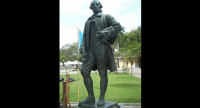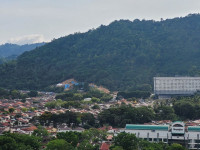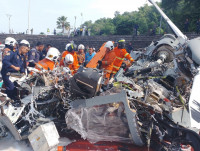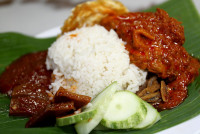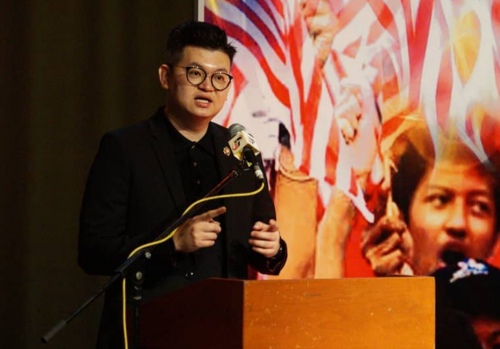KAKISENI in collaboration with MPH publication launched the third and final book of the Hikayat series titled ‘Rahman’s Big Break’ based around the glory of Bangsawan theatre during the Georgetown Literary Festival 2020 in a Facebook Live event recently.
The children’s book, written by David Chin and illustrated by Leong Wai Khong, follows the journey of main character Rahman into becoming a star through his parents’ Grand Opera. Parts of the story and illustrations in this book were referenced from actual Bangsawan advertisements and settings in Penang to make them as authentic as possible.
Reliving the glory
“The stories of Rahman learning new things from different cultures wasn’t something I made up, it really was what Bangsawan performers did in the day to keep their shows fresh and to cater to diverse audience, from Hokkien tradespeople to Malay villagers,” shared Chin.
He notes, “Rahman’s Big Break really owes its existence to Tan Sooi Beng, Professor of Ethnomusicology at Universiti Sains Malaysia (USM), and her book ‘Bangsawan: A Social and Stylistic History of Popular Malay Opera’.
The book—which Chin took inspiration from—also documents the story of the legendary practitioner of the art form Rahman B where it “lovingly details Bangsawan theatre. But even by the time of its publication, Bangsawan was already forgotten in the public imagination.”
“When we met with Sooi Beng at USM to talk about Bangsawan theatre, she was adamant that Bangsawan be remembered for its multicultural roots. It was distinctly Malaysian in the sense that it was a hybrid artform borrowing stories and instruments from different cultures and appealing to audiences across a broad spectrum,” Chin added.
The author detailed his writing for Rahman’s Big Break as “starting out with fantastical elements that you might find in fairytales but going deeper as you read further into the story to depict the honest reality of the amazing people that lived and performed the art form (from the little to big dramas in their lives).”
On his writing process, Chin highlights, “I had a lot of help from friends who are writers and performers themselves, to confirm if my instincts for the story were on the right path,” further adding he starts “from scratch again to nurture the story until it becomes something that begins and ends satisfyingly before cleaving away the unnecessary bits.”
The biggest takeaway he has taken off from the experience is “that everything is ephemeral.”
“When I think about how popular Bangsawan was in its heyday—the industry couldn’t imagine an end to the theatrics. There were multiple companies that toured Malaya and Indonesia, and entertainment parks were purpose-built to house the most popular companies too. One can only imagine the performance scale of Bangsawan’s life and energy back then,” shared Chin.
“When cinema was born, and then came television, the stage lights don’t seem as bright or as glamorous as studio spotlights any longer. Progress might march on relentlessly, but I think we lose something essential when new technology displaces old norms or paradigms,” he added.
Educating the young
“Bangsawan troupes performed stories from all over the world and combined drama, music and dancing as early as 1875. They would travel around British Malaya and the Dutch East Indies, entertaining locals and royalty,” said Kakiseni president Low Ngai Yuen.
“It’s really unfortunate the art form began to decline since the invention of cinema and television. We hope Rahman’s Big Break will not only allow you to have a glimpse on how brilliant Bangsawan was, but also to encourage interest and love for all Malaysian traditional performing arts,” she added.
National Department for Culture and Arts (JKKN) director-general, Tan Sri Norliza Rofli also left a message for audience attending the book launch: “I still remember being at the launch of the first book ‘Shadows’ out of the Hikayat series launched four years ago and I am glad to see the project being continued with the latest release of ‘Rahman’s Big Break’.”
"Kakiseni’s efforts of ensuring Malaysians not only appreciate the performing arts but keeping it alive is commendable and we hope that other organisations and NGOs can help to mimic or extend Kakiseni’s work. More can and should be done to save Bangsawan as well as other traditional art forms,” said Norliza.
Sharing on his experience of illustrating the drawings for the book, Wai Khong notes: “I definitely enjoy the process and see it as a once in a lifetime experience.”
“The journey for this work takes a lot of hard work because the story itself is set back in the 1920s, and I wanted the drawings to also take a more traditional approach by having it done by hand — drawing with ink and a lot of tracing papers. There were instances that I had to redraw some scenes but that is part of the fun of capturing the past — from the architecture to the people of that time — as accurate as possible,” he said.
“The illustrations took a few phases consisting of up to 10 pages per phase. The process itself is very extensive and intricate in some ways, having to sketch the drawing, then tracing them and scanning to get it digitally coloured. Each phase would take about two to three months to complete. I am absolutely happy about the end result of course with all the effort put in,” added Wai Khong
Hikayat series is an initiative between Kakiseni in collaboration with MPH publication to highlight on Malay traditional performing arts. The first book launched four years out of the series called ‘Shadows’, that talks about the story of Adam discovering the world of Wayang Kulit filled with adventure. The second book is about a girl named Nana, who pursues a passion in dance allowing readers to learn more about the art of Mak Yong.
On whether Kakiseni would explore beyond Malay traditional art forms for future projects that are similar, Ngai Yuen says, “Absolutely! We had this third book as the final installment because that was the initial plan back in 2016 when we set out the project. Moving forward, there will definitely be room for more opportunities to explore.”
“I think what people should know is that producing the Hikayat series is not a simple and short process because we [Kakiseni] are very meticulous with how we aim to portray the subject matter.”
“We see the books under the series as a way to introduce children to the art forms and encourage them to try to use it as a tool and allowing them to experience the value of each tradition,” she shared.
‘Rahman’s Big Break’ is available at MPH Bookstores, MPH Online, and from Kakiseni. Private and international schools that want to bring Hikayat workshops to their schools will be offered the opportunity to generously sponsor Hikayat to national schools or education centres for the underprivileged that may not have the funding to do so on their own.
If you are keen to be a part of bringing Hikayat to more schools and children in Malaysia, contact Lylatul Qadrina at [email protected] or +6014 935 0755. – The Vibes, December 4, 2020
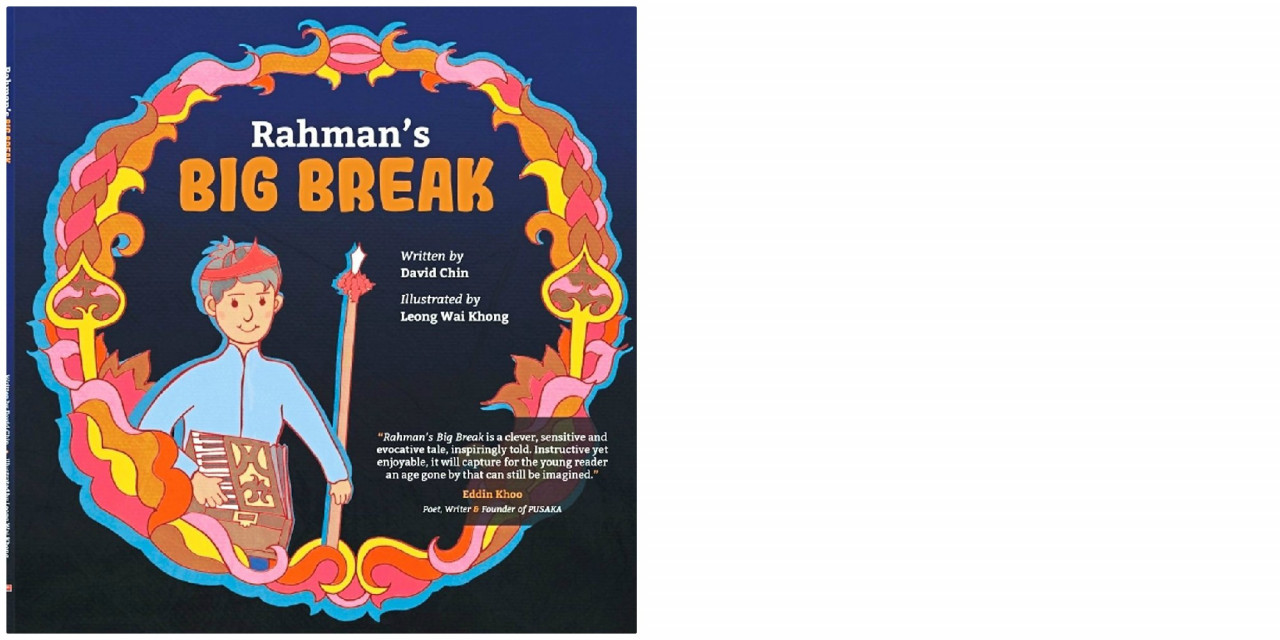



_27112020-akmainpic-hikayat.jpeg)


